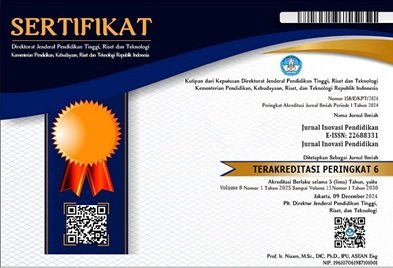PENGARUH PAPAN PERMAINAN SEBAGAI MEDIA PEMBELAJARAN UNTUK PERKEMBANGAN SOSIAL-EMOSIONAL ANAK USIA DINI
Kata Kunci:
Pengaruh, Papan Permainan, Perkembangan, Sosial-Emosional, AnakAbstrak
Penelitian ini didasari dengan permasalahan kurang optimalnya kemampuan sosial emosional pada anak usia dini. Hal tersebut dikarenakan kecenderungan anak untuk melakukan aktivitasnya secara individual serta pembiasaan yang dilakukan oleh guru masih dikatakan kurang menarik yakni hanya dengan memberikan arahan sederhana tentang perilaku sosial yang baik, dan arahan untuk mengendalikan emosional anak sehingga anak menjadi bosan dengan stimulasi yang diberikan. Penelitian ini bertujuan untuk mengetahui pengaruh papan permainan sebagai media pembelajaran untuk perkembangan sosial emosional anak usia dini. Jenis penelitian ini adalah kuantitatif dengan metode eksperimen dalam bentuk quasy eksperimental (eksperimen semu). Adapun cara menentukan sampel yakni dengan purposive sampling. Jumlah keseluruhan anak pada penelitian yaitu 153 orang anak, namun anak yang akan dijadikan sampel penelitian yaitu kelompok B3 dengan jumlah anak 15 orang anak sebagai kelas eksperimen dan kelompok B8 dengan jumlah anak 15 orang anak sebagai kelas kontrol. Instrumen penelitian berjumlah tujuh butir dengan kategori skor M (4), C (3), L (2), BB (1). Tekknik analisis data dengan melakukan uji normalitas, uji homogenitas, uji hipotesis, yang difasilitasi oleh SPSS versi 26. Merujuk pada hasil penelitian diketahui bahwa data terdistribusi secara normal dan homogeny, setelahnya dapat dilanjutkan dengan melakukan uji hipotesis. Tujuan dari uji hipotesis untuk meninjau apakah diperoleh pengaruh terhadap perlakuan pada setiap kelas. Uji hipotesis dilakukan dengan menggunakan uji independent sampel T-test. Terlihat berda dari rata-rata peningkatan skor di kelas eksperimen dan kelas kontrol. kenaikan skor anak lebih besar di kelas eksperimen yakni 88 skor, pada kelas kontrol skor naik hanya sebesar 29. Maka dari itu hasil penelitian menampilkan adanya pengaruh papan permainan sebagai media pembelajaran untuk perkembangan sosial anak usia dini di Taman Kanak-kanak Islam Raudhatul Jannah Payakumbuh.
This research is based on the issue of the less optimal social-emotional abilities in early childhood. This is due to children's tendency to engage in individual activities and the habituation carried out by teachers is still considered less attractive, namely only by giving simple instructions about good social behavior and instructions to control children's emotions, causing children to become bored with the given stimulation. This research aims to determine the effect of board games as a learning medium on the social-emotional development of early childhood. This type of research is quantitative with an experimental method in the form of quasi-experimental. The sampling technique used is purposive sampling. The total number of children in the study was 153, but the sample taken consisted of group B3 with 15 children as the experimental class and group B8 with 15 children as the control class. The research instrument consisted of seven items with a scoring category of M (4), C (3), L (2), BB (1). The data analysis technique involved normality test, homogeneity test, and hypothesis testing, all facilitated using SPSS version 26. Referring to the results of the study, the data were normally distributed and homogeneous, allowing the hypothesis test to proceed. The purpose of the hypothesis test was to determine whether there was an effect of the treatment on each class. The hypothesis test was conducted using the independent sample t-test. A difference can be seen in the average score increase between the experimental and control classes. The increase in children's scores was greater in the experimental class, reaching 88 points, while in the control class the score only increased by 29 points. Therefore, the results of the study show that board games have an effect as a learning medium on the social-emotional development of early childhood at Raudhatul Jannah Islamic Kindergarten Payakumbuh.





